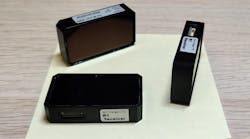The Overview
In its efforts to expand the application of wireless power transfer to a broader range of devices and use cases, Wi-Charge has released its Gen2 wireless power receiver, which it claims is a significant step forward in terms of power, ease of integration, and form factor.
Who Needs It & Why?
Wireless-charging technology is deployed worldwide and has been embedded in devices ranging from smart locks to advertising video displays to contactless charging pads. By enabling a constant source of power to devices, regardless if they have access to an outlet or charged battery, wireless power transfer opens up almost limitless capabilities free of restrictions from the lowest common design denominator: access to power.
Under the Hood
Wi-Charge's technology comprises a wireless power transmitter and receiver. The transmitter converts electricity into safe infrared beams, which are then delivered to the receiver embedded in host devices. The receiver converts the infrared energy into electricity that's used to charge the internal battery or supercapacitor. The receiver also sends telemetry data back to the transmitter, including battery status, usage statistics, and billing information.
The second generation of Wi-Charge’s receiver is claimed to deliver 40% more power than the first generation, enabling it to power more devices from one transmitter as well as power devices with greater demand. It also offers a 30% smaller footprint, which means easier mechanical integration and opening up an even broader range of devices and use cases.
Among other enhancements to the device, the Gen2 receiver now includes a battery charger, configurable output voltage, and control interface, resulting in simpler integration and lower bill-of-materials costs for OEMs. It can transfer customer alerts and telemetries from the receiver to the transmitter and from there to the Wi-Charge cloud, where charging data is aggregated. A that point, smart power delivery can be controlled remotely.
